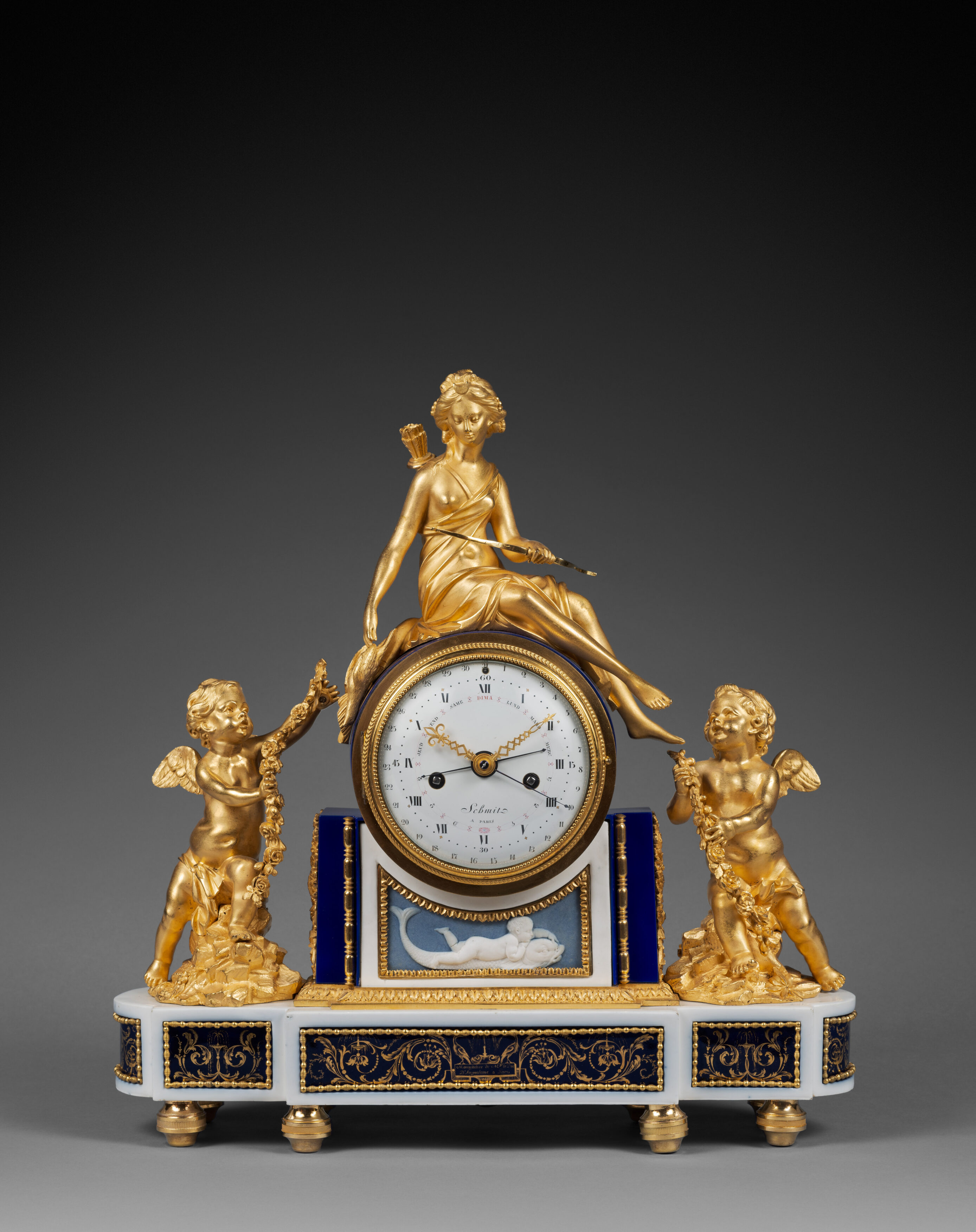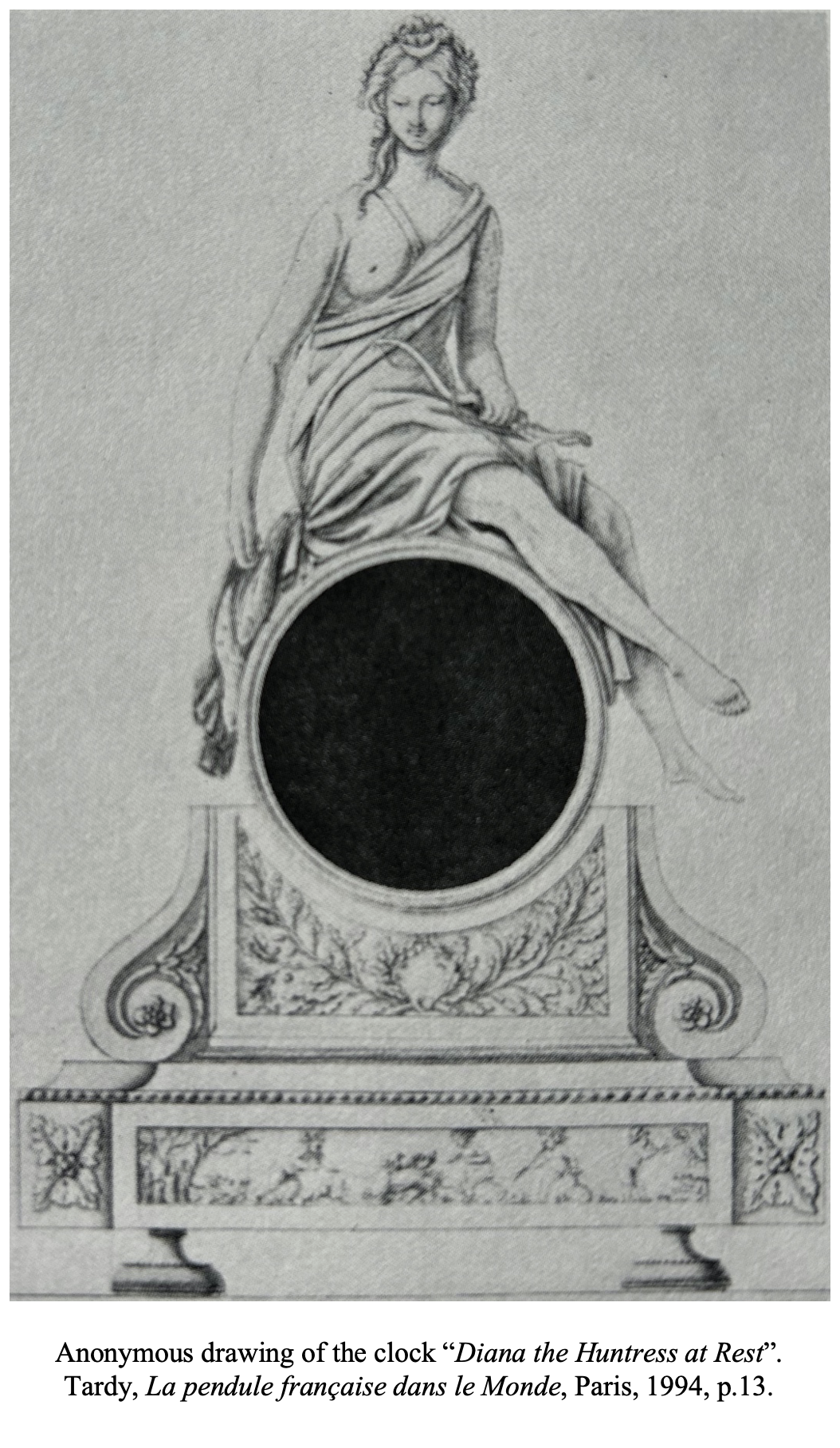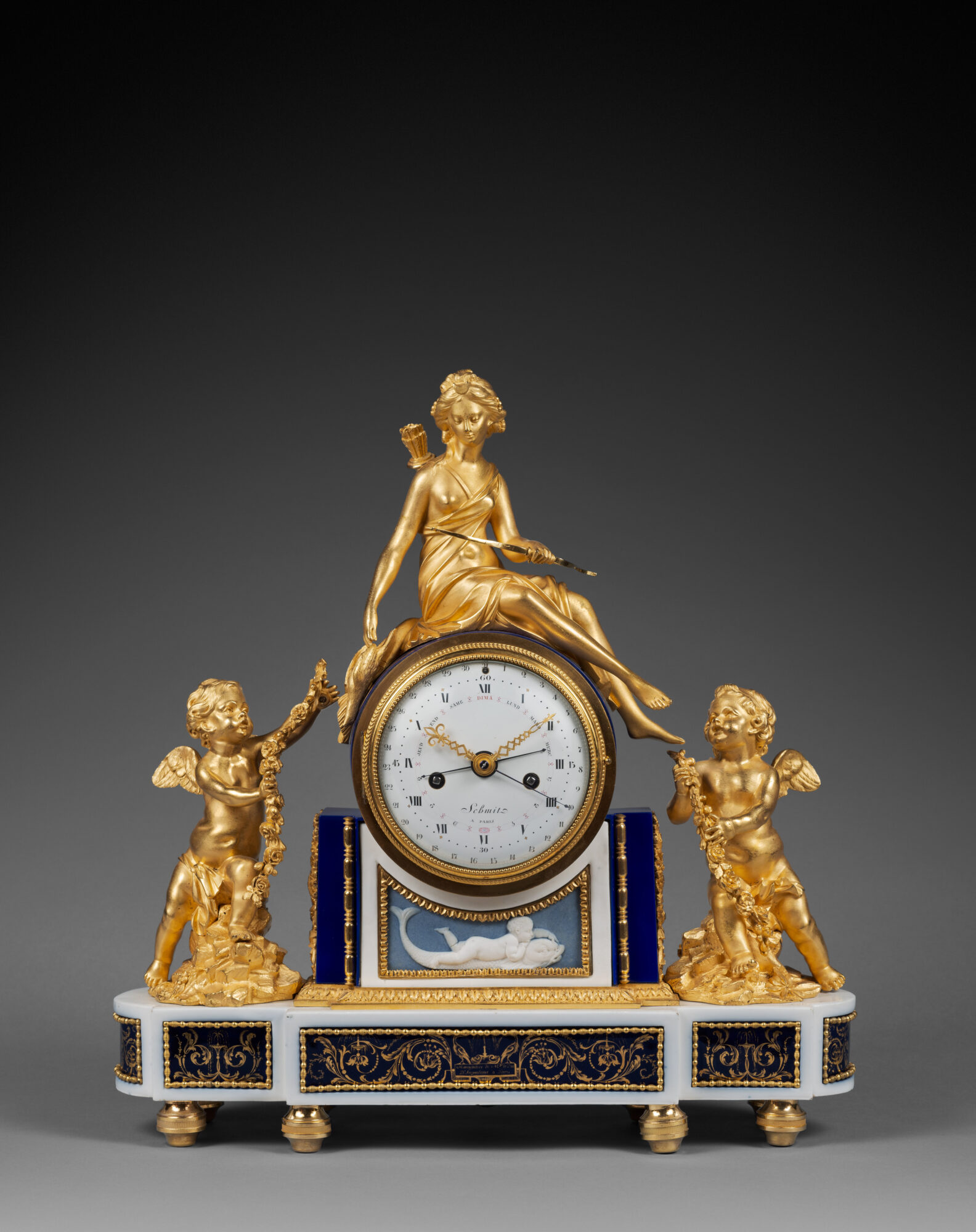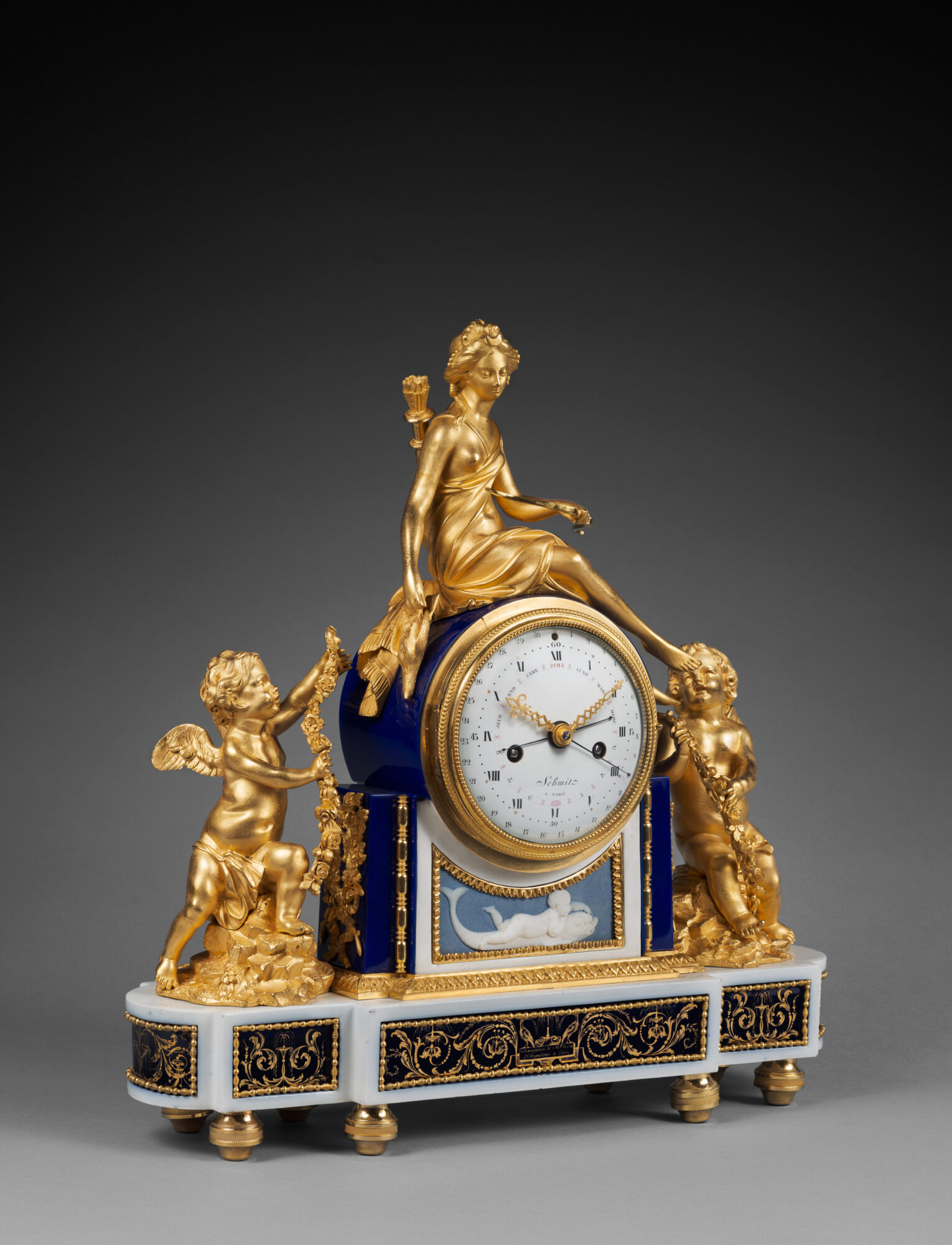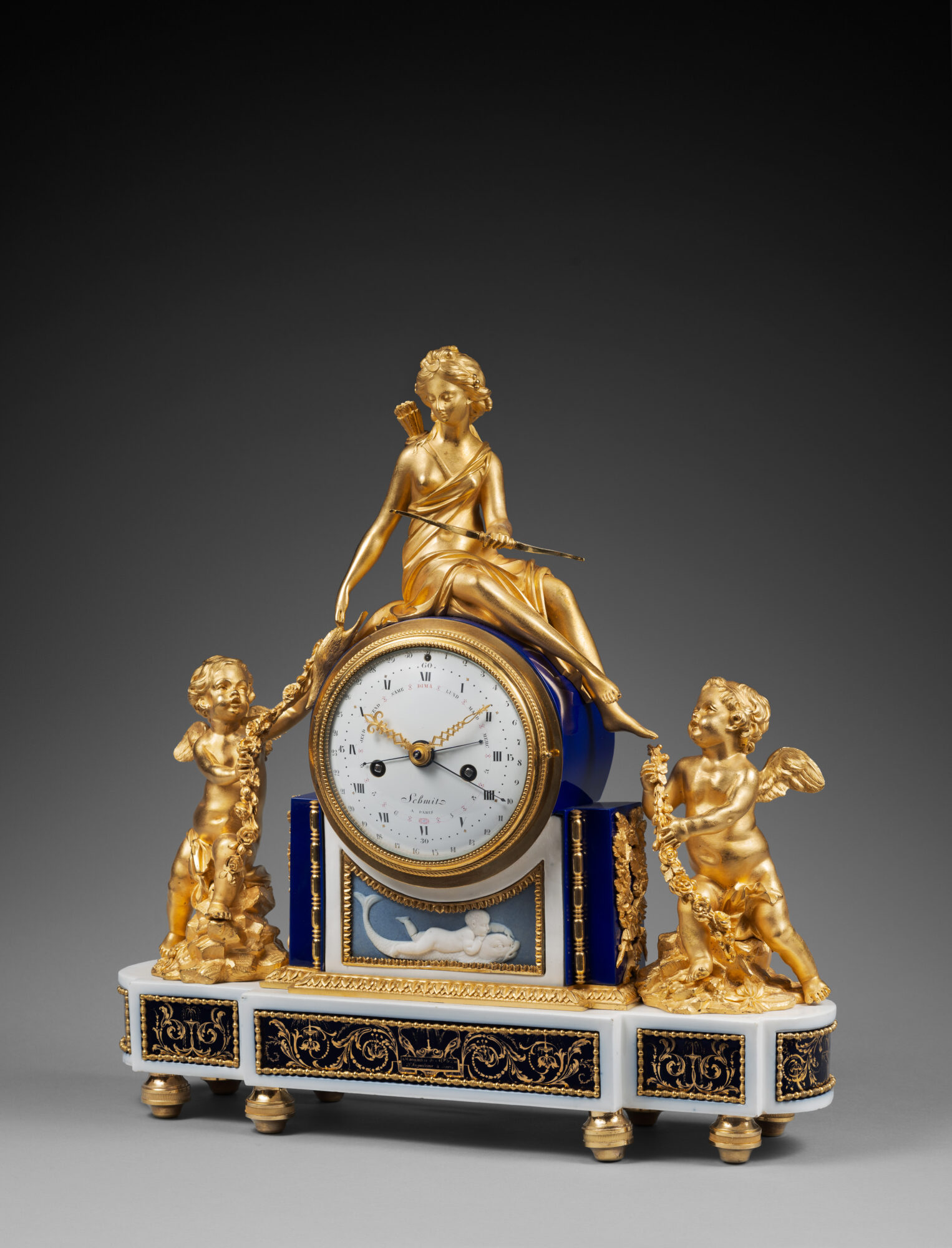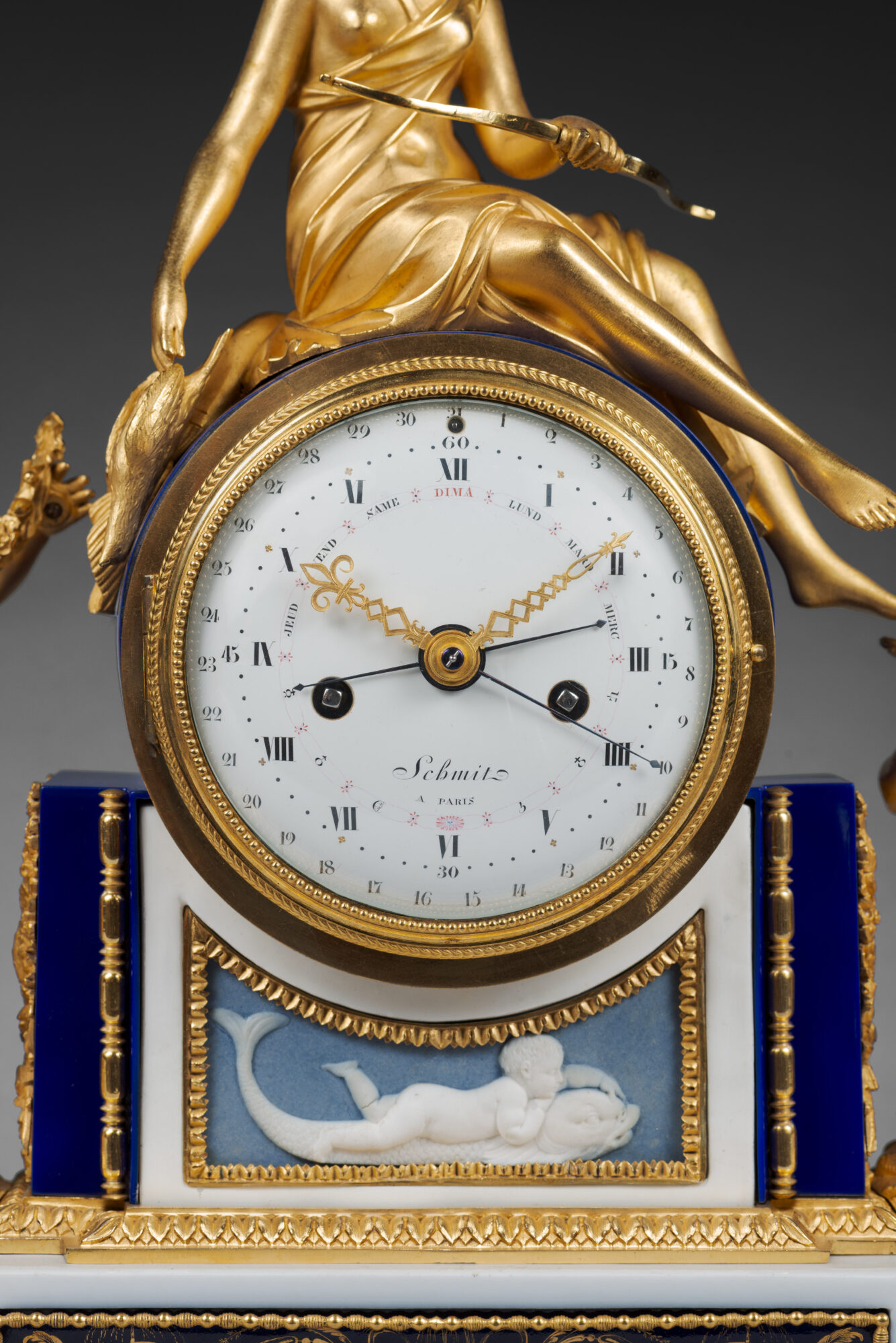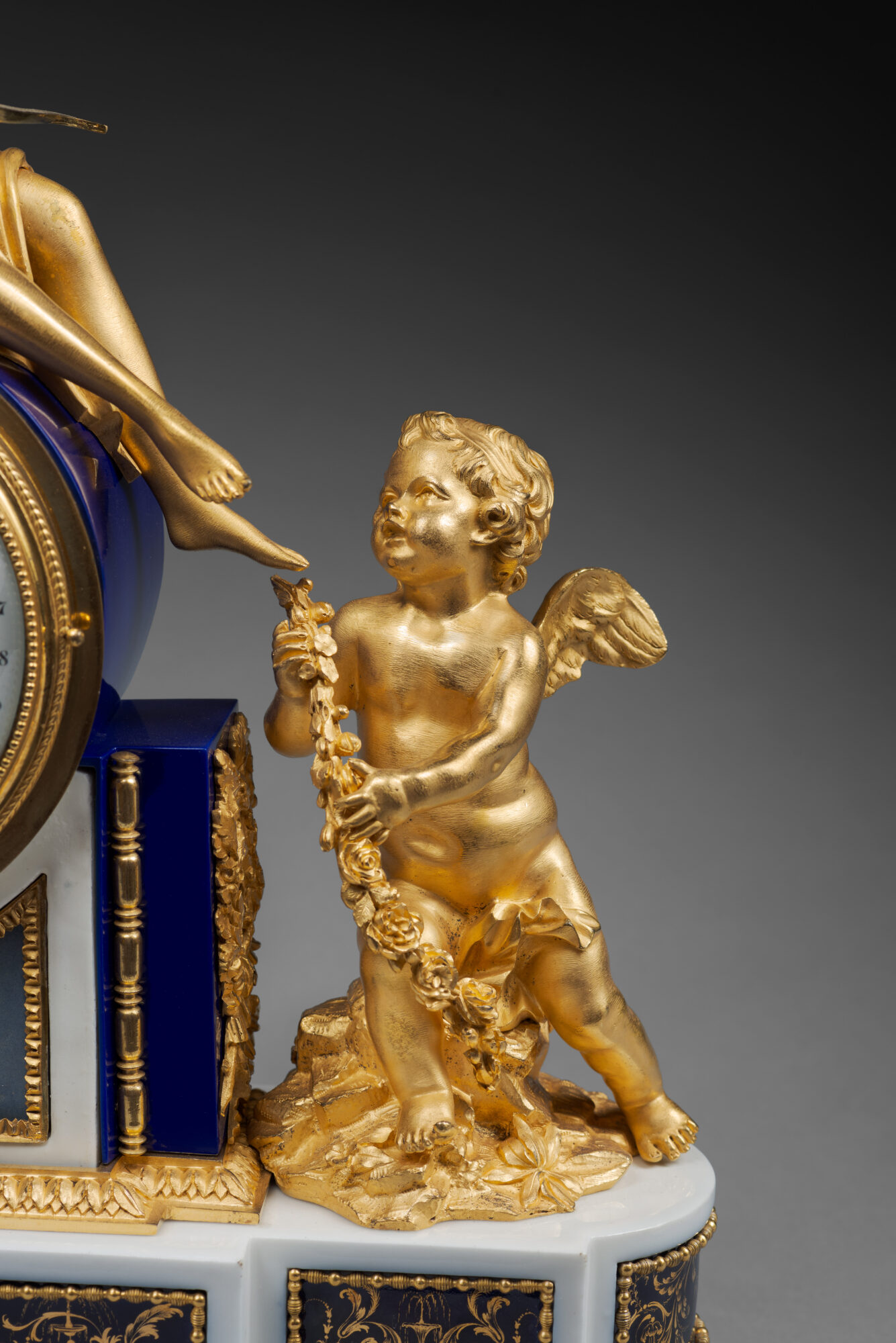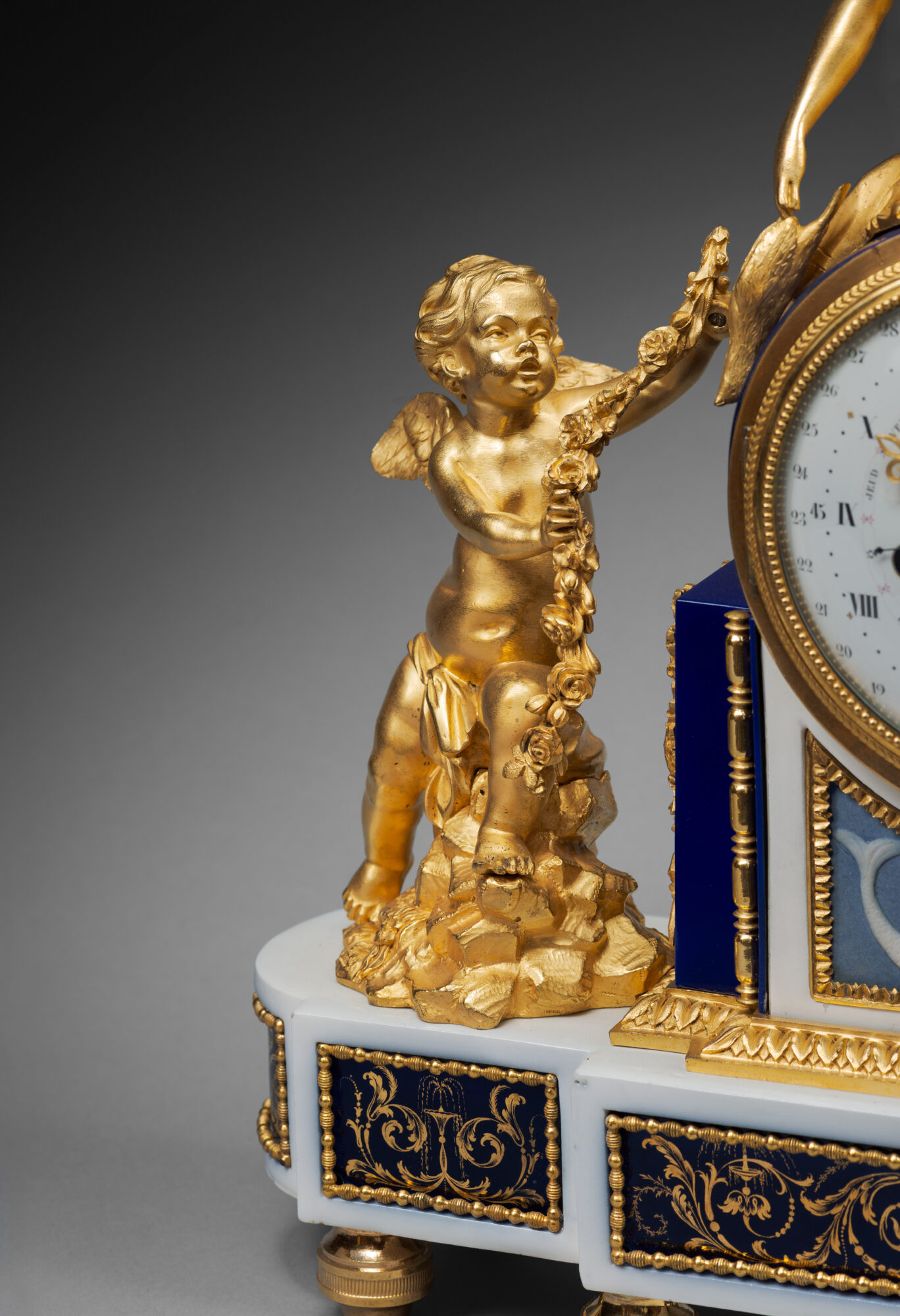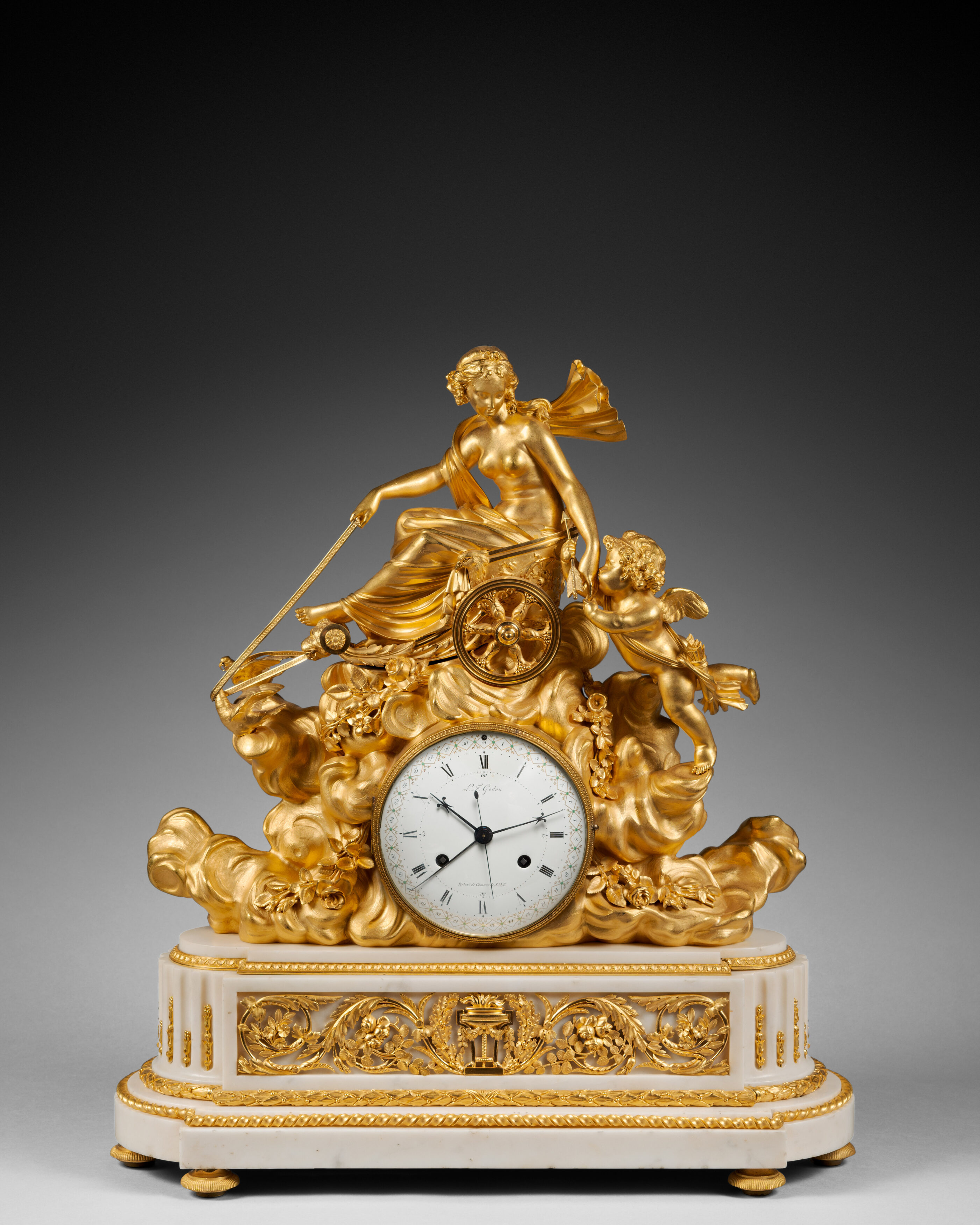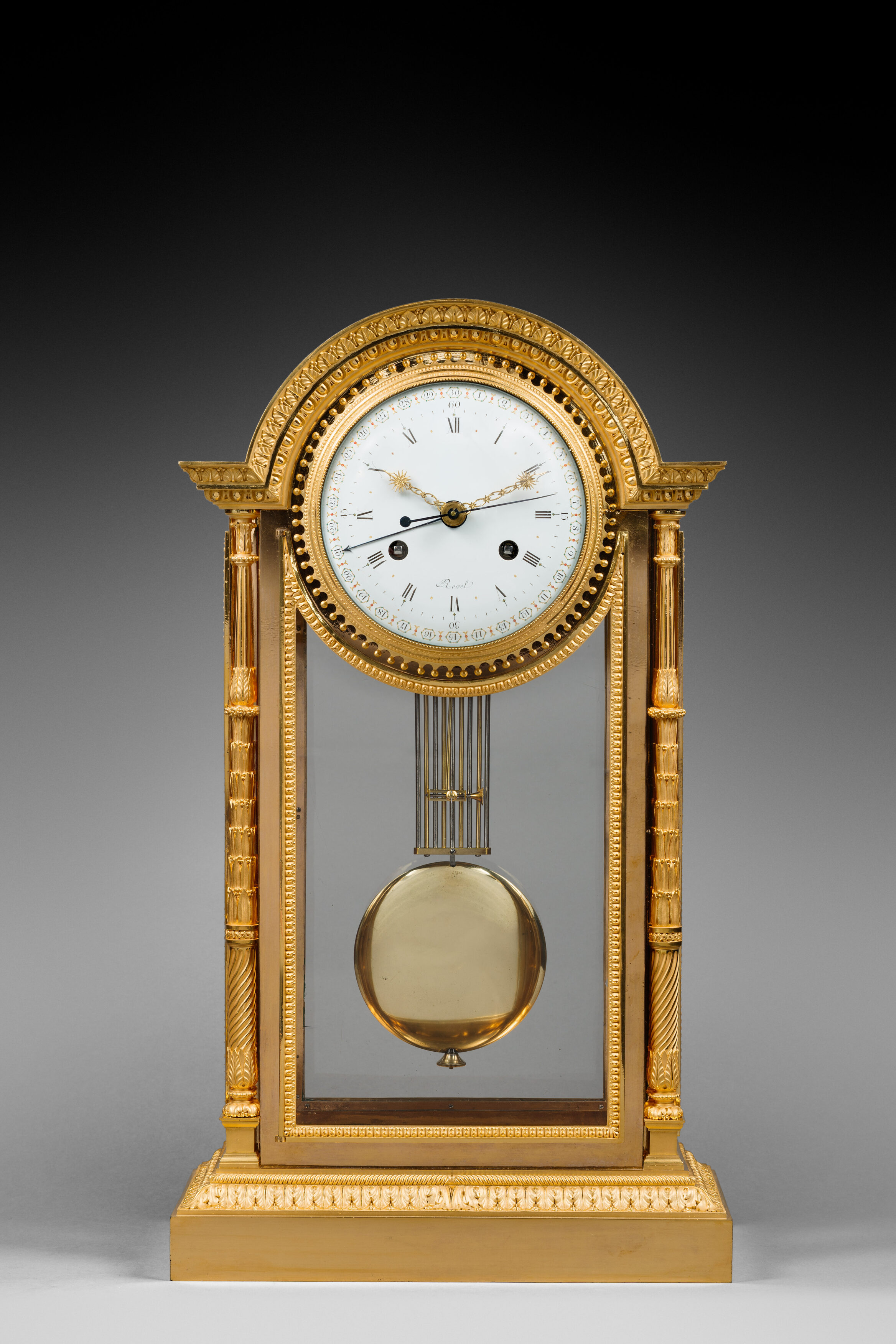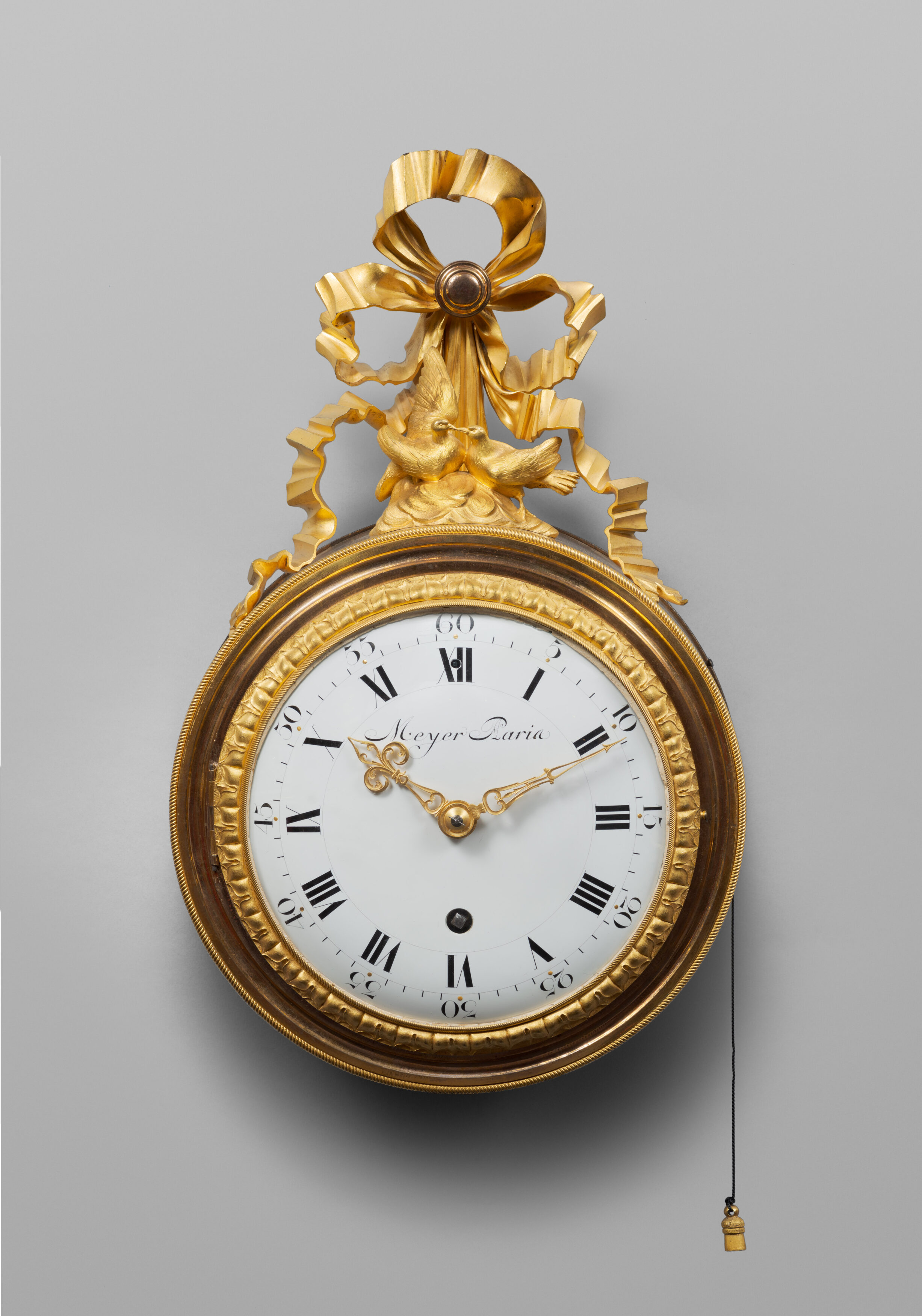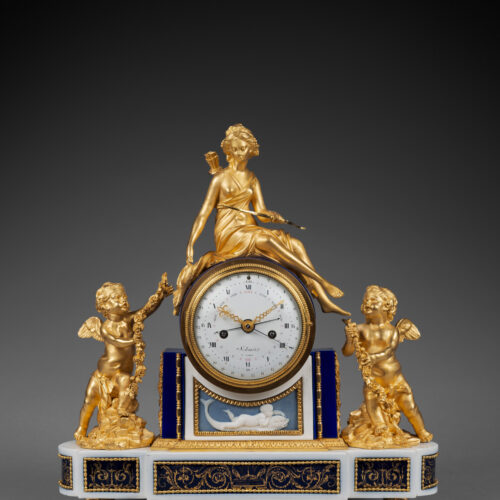Rare Mantle Clock made of Paris Porcelain, Wedgwood Bisque, Lacquered Sheet Metal Imitating Royal Blue Porcelain and Finely Chased Matte Gilt Bronze
« Diana the Huntress at Rest »
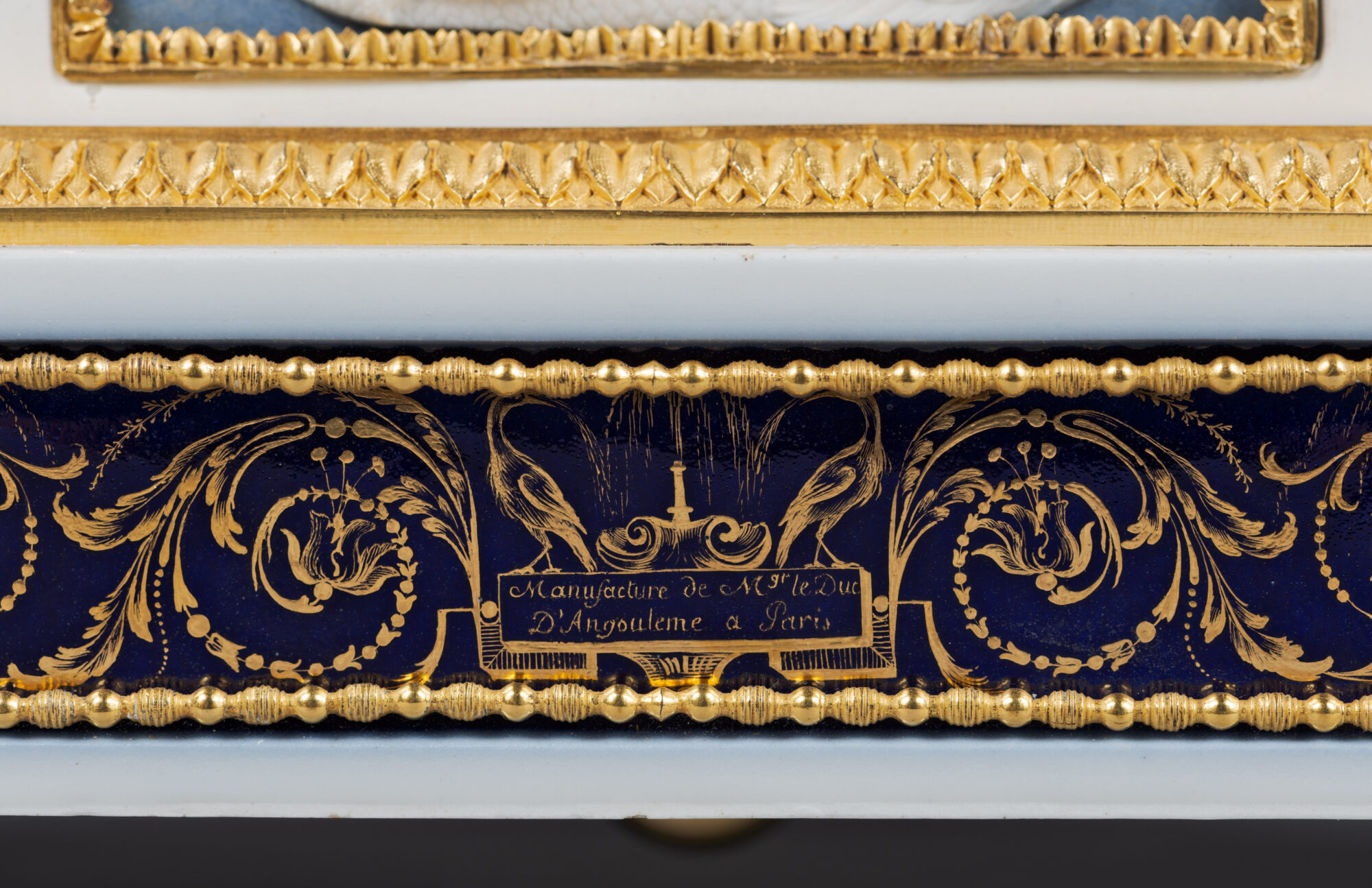
Porcelain by The Dihl and Guérhard Manufactory, known as the Manufactory of the Duke of Angoulême
Dial signed “Schmit à Paris” for clockmaker Jean-Nicolas Schmit
Paris, late Louis XVI period, circa 1785-1790
The circular white enamel dial, signed “Schmit à Paris”, indicates the Roman numeral hours, the Arabic numeral fifteen-minute intervals, and the date, as well as the days of the week along with their corresponding planetary signs, by means of four hands, two of which are made of pierced and gilt bronze. The hour and half hour striking movement is housed in a case based on the theme of the resting huntress Diana. It is made of finely chased matte gilt bronze, Wedgwood bisque porcelain, lacquered sheet metal that imitates royal blue porcelain and porcelain of Paris. Surmounting the clock is a seated figure representing Diana the huntress at rest; on her head there is a crescent moon, and she carries a quiver of arrows and holds a bow. She is sitting on the drum case, which itself stands on an entablature whose base is adorned with a water leaf frieze embellished with beadwork and features a bisque plaque with a blue ground representing a putto on a dolphin. The goddess is flanked by two winged Cupids standing on rocks and holding flower and leaf garlands. The quadrangular base with rounded corners and protruding sections is decorated with reserves framed by round and oval beads that surround panels with a blue ground that are adorned with gilt motifs of scrolls, fountains and birds. The central panel of the façade bears a cartouche with the words “Manufactory of His Grace the Duke of Angoulême in Paris” (Manufacture de Mgr le Duc d’Angouleme à Paris). The clocks stands on eight feet decorated with bands of mille-raie friezes.
Discover our entire collection of antique mantel clocks for sale online or at the gallery.
La Pendulerie is the specialist in fine and rare antique clocks, based in Paris.
The theme of Diana resting after the hunt was one of the favorite subjects of Parisian clockmakers during the last quarter of the 18th century. The present clock is, however, exceptional for the elegance of its composition and the diverse materials that compose it, including gilt bronze, porcelain, and Wedgwood bisque, which make it very rare. Only a few bronze clocks featuring Diana are known. One example, with a different design, is in the Ehrenburg Palace in Coburg (see L. de Gröer, Les arts décoratifs de 1790 à 1850, Fribourg, 1985, p. 288, fig. 550). Several clocks are known that are made entirely of bronze, and are of a much less elaborate design; they feature an identical figure of Diana at rest on the drum case. One example is illustrated in P. Kjellberg, Encyclopédie de la pendule française du Moyen Age au XXe siècle, Paris, 1997, p. 252. A second example is pictured in Tardy, La pendule française dans le monde, Paris, 1994, p. 305; the author also includes an anonymous drawing illustrating the same theme, perhaps drawn from the sales album of a clockmaker who worked during the Louis XVI period (Tardy, op.cit., p.13).
The Dihl and Guérhard Manufactory or The Manufactory of the Duke d’Angoulême
The Dihl and Guérhard Manufactory is known as the “Duke of Angoulême’s Manufactory” because as of 1781 the duke of Angoulême was its sponsor. He entrusted the factory’s running to the partners Christophe Erasmus Dihl and Mr. and Mrs. Guérhard. Under the direction of these partners, as soon as the factory resumed production, it became the Sèvres Manufactory’s main rival in the final years of the 18th century and during the reign of Napoleon. After the fall of the Ancien Régime the factory created new models, including unglazed groups and figures that were especially popular when they were mounted “en grandes pendules en beau biscuit” (as beautiful bisque porcelain on fine clocks). Throughout its years of activity, the manufactory became known for the extraordinary quality of its models and particularly clocks, which were sought-after by the important Parisian connoisseurs of the time (Dictionnaire universel de la géographie commerçante, Tome V, p. 325; cited in R. de Plinval de Guillebon, Les biscuits de porcelaine de Paris XVIIIe-XIXe siècles, Editions Faton, Dijon, 2012, p. 199).
Jean-Nicolas Schmit (? - circa 1820)
Jean-Nicolas Schmit is one of the most important Parisian clockmakers of the late 18th century and early 19th centuries. After becoming a master in August 1781, he opened a workshop in the rue Betizy and won immediate renown among connoisseurs. Dihl and Guérhard, the directors of the Duc d’Angoulême’s porcelain factory, were impressed by his movements and purchased the majority of their clock movements from him. Contemporary documents mention the clockmaker’s work as being in the collections of the greatest art enthusiasts of the period. Clocks by him are included in the probate inventory of Jean-Etienne-Marie de Portalis, made a conseiller d’état by Napoléon, and in that of the wife of Louis-Marie-Bretagne-Dominique de Rohan-Chabot, Duc de Rohan and cousin of King Louis XV.
